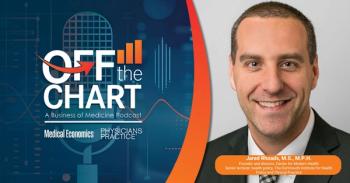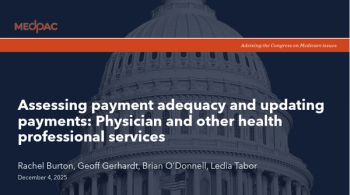
How to protect PPE supply in future public health emergencies
Stockpiling more imported disposable gowns is not the answer. Instead, follow the lead of NASEM and consider reusable personal protective equipment.
As lockdowns prevented routine medical appointments and patient care shifted to larger hospital systems, the COVID-19 pandemic pushed America’s independent physician offices to the brink. When they were finally able to reopen their doors, independent practices faced another difficult challenge: securing access to affordable personal protective equipment (PPE).
According to a
Federal and state authorities were slow to address the problem. As hospitals, laboratories and other facilities received updates on the availability of gowns, surgical masks and other critical PPE, the AMA warned in a
Unfortunately, this painful experience from the last pandemic has done little to change how we plan for future ones. Approximately 90% of all health care PPE in the United States was single-use or disposable before the COVID-19 pandemic, and that’s still true today.
If faced with another pandemic, many health care facilities would experience similar PPE supply challenges, making it difficult to protect frontline health care workers and care for patients. Simply stockpiling more disposable gowns and masks is not a viable solution for several reasons.
For starters, PPE demand will always surge during a pandemic, when the need to stop the spread of a deadly pathogen grows more urgent. As demand increases, supply will go down and costs will go up. Additionally, many independent practices lack the capital or storage capacity necessary to stock enough disposable PPE to weather a public health emergency. Also, with
When the next emergency comes, smaller, independent practices will find themselves competing for a limited, more costly supply of PPE against larger hospitals with greater purchasing power. Meanwhile,
The National Academies of Sciences, Engineering, and Medicine recently convened a
Rather than depending on a finite supply of single-use products vulnerable to global supply chain disruptions, health care facilities should contract more with local commercial laundry operators who can supply hygienically clean, reusable textiles. Commercial laundry operators typically own and maintain the inventory, eliminating up-front purchasing costs and providing health care facilities with a continuous supply of hygienically clean, reusable PPE.
Other countries that maintain a better balance between disposable and reusable PPE didn’t experience the same supply disruptions during the COVID-19 pandemic. As one expert noted during the National Academies workshop, “reusable gowns can increase supply resilience in times of major crisis.”
Reusable textiles also help facilities lower their operating costs. One reusable gown can replace 75 disposable gowns. According to research reviewed by the National Academies, switching from disposable to reusable isolation gowns yielded hospitals 52% in cost savings. Other textiles, including surgical gowns and incontinence pads, produced up to 90% cost savings.
Hygienically clean textiles deliver lower costs while meeting high standards for safety. The National Academies discussed a 2018 study that found reusable gowns consistently outperformed disposable gowns for liquid barrier protection. Medical centers that made the switch to more reusable textiles during the pandemic didn’t experience an increase in infection rates.
For independent practices operating with tight margins, reusable textiles and PPE can provide greater supply resiliency and financial stability. They also provide a better experience for patients and health care workers. In a 2022 survey done on behalf of the Textile Rental Services Association (TRSA), an organization I lead, 60% of respondents said they prefer cloth over disposables in medical settings to offer comfort and security, and 81% prefer to have their medical facility contract with a professional cleaner.
As some of the biggest purchasers of PPE, large hospital systems also have a unique responsibility to strike the right balance between disposable and reusable textiles. If they do, then they will be better prepared for future emergencies and at the same time help ensure ambulatory surgical centers, doctor offices and all health care providers have a more sustainable and affordable supply of critical protection equipment.
Independent physicians need hospitals and medical centers to do their part. The National Academies workshop is an urgent call to action for the entire health care industry to diversify the supply of lifesaving personal protective equipment.
Joseph Ricci serves as the president and CEO of the Textile Rental Services Association (TRSA) of America, a position he has held since 2010.
Newsletter
Stay informed and empowered with Medical Economics enewsletter, delivering expert insights, financial strategies, practice management tips and technology trends — tailored for today’s physicians.















